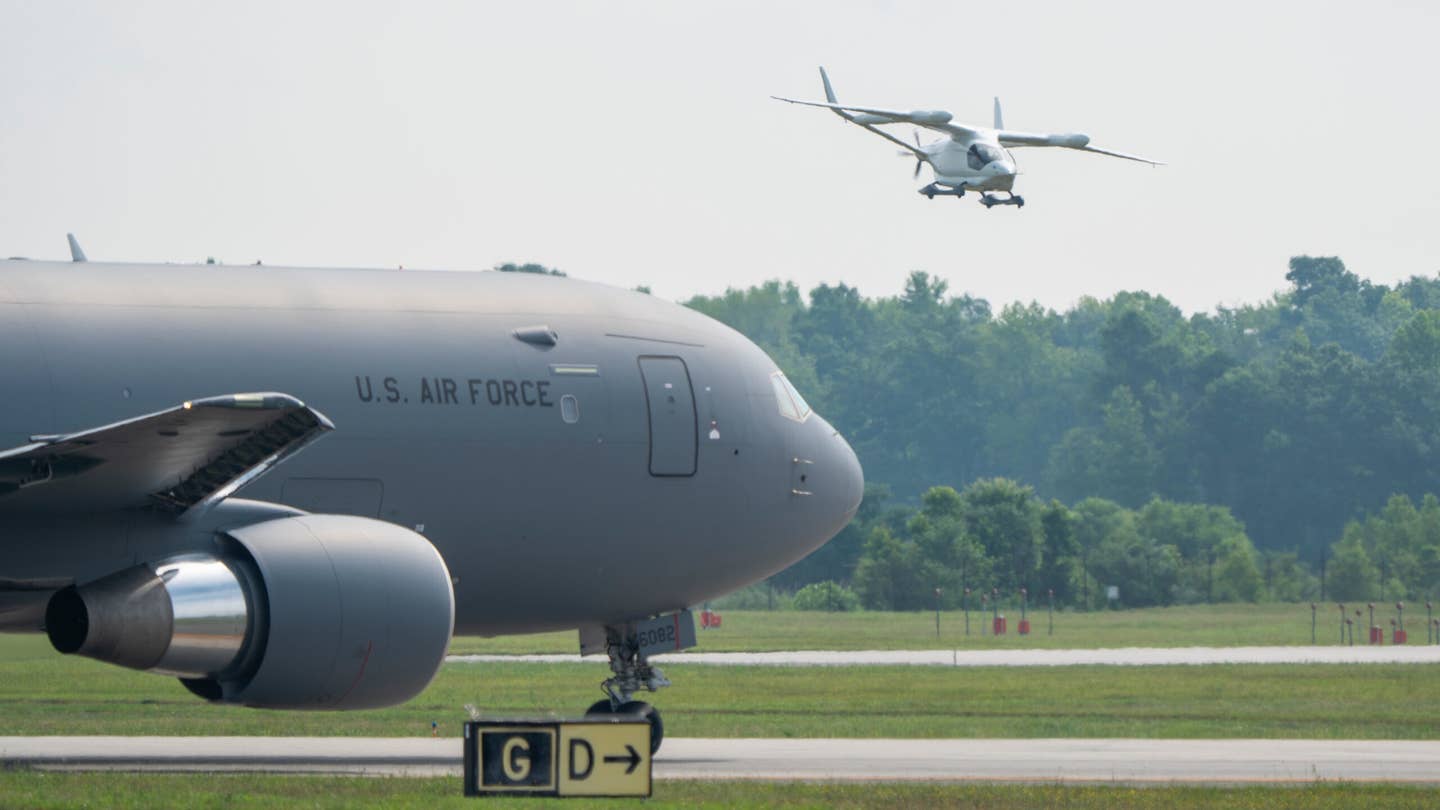Beta Electric Aircraft Completes ‘Real-World’ Air Force Missions
The company’s Alia model moved up to 500 pounds of cargo at a time over the course of a monthlong exercise involving two major commands of the U.S. Air Force.

Beta’s all-electric Alia comes in for a landing during a demonstration with the U.S. Air Force. [Courtesy: Beta Technologies]
After wrapping up its first test and deployment campaign with the U.S. Air Force in January, electric aircraft manufacturer Beta Technologies on Monday said it completed two more real-time demonstrations, dispatching its Alia aircraft with only a few minutes’ notice.
The company believes these were the first such deployments for an electric aircraft with major commands of the Air Force.
The on-base and cross-country missions with the Air Combat Command (ACC) and Air Mobility Command (AMC) included daylong and even multiday exercises. Beta characterized them as “real-world” missions that were conducted at the behest of the ACC and AMC, with a little help from AFWERX, the Air Force’s innovation arm with which the manufacturer has worked since 2019.
The goal of these flights was to see how Beta’s Alia, a conventional takeoff and landing (CTOL) design, could support defense use cases such as resupply, cargo delivery, and personnel transport, including during combat. The aircraft seats up to five passengers and has a range of 250 nm.
Alia took off from Beta’s headquarters at Burlington International Airport (KBTV) in Vermont and embarked on a series of cross-country flights before arriving at the Air National Guard’s Alpena Combat Readiness Training Center (CRTC) in Alpena, Michigan. There, with the ACC, the aircraft completed a four-day exercise.
Over the course of 24 flight hours, Alia moved more than 2,200 pounds of cargo—including 500 pounds at a time—delivered meals and equipment, simulated a medical evacuation between two bases, and filled in for a Lockheed C-130 Hercules that had a scheduled airlift canceled.
“We can be ready to take off in a matter of minutes, and the battery has a low center of gravity, which is not affected by the way you load the cargo,” said Ross Elkort, flight test engineer for Beta.
The next stop for Alia was Springfield, Ohio, where a pilot for UPS Flight Forward completed a ground school program, simulator training, and evaluation flight. Flight Forward in 2021 placed an order for the electric vertical takeoff and landing (eVTOL) variant of Alia.
After that came a simulation of planned Alia routes in Virginia and a joint demonstration at Atlantic City International Airport (KACY) in New Jersey alongside the FAA, AMC, and others.
The AMC helped finish out the campaign with a series of flights between Dover Air Force Base in Delaware (KDOV) and McGuire Air Force Base (KWRI) in New Jersey, which are considered key hubs for military logistics. During a daylong exercise, AMC pilots flew Alia five times, delivering multi-hundred-pound payloads and slashing delivery times by more than half.
“It brings key innovation to the mission. It's going to make things faster and simpler,” said Alyxandra Scalone of the Air Force’s 305th Maintenance Squadron at Joint Base McGuire-Dix-Lakehurst. “Dover (AFB) is about two and a half hours away from us. Today’s flight only took 45 minutes.”
Over the course of the monthlong campaign, Beta said it deployed Alia with a 100 percent success rate.
Beta has worked with AFWERX through its Agility Prime division, which focuses on vertical lift technologies, since 2020.
Beta last year installed the first electric aircraft charger at a Department of Defense site at Eglin Air Force Base in Florida. The Alia eVTOL in 2021 became the first electric aircraft to receive military airworthiness approval for human flight.
The CTOL, meanwhile, was responsible for the first airman flight of electric aircraft and was the first of its kind to complete an Air Force deployment: a three-month campaign at Eglin’s Duke Field (KEGI) and Robins Air Force Base (KWRB) in Georgia.
From October to January, it completed what Beta claims to be the first simulated casualty evacuation and first live military exercise with an electric aircraft. The latter saw Alia fly alongside 350 airmen, demonstrating how the aircraft could integrate with existing military operations.
Meanwhile, in April, the Alia eVOL completed its first crewed transition from hover to forward flight, a key stage in that model’s development. The vertical lift version of Alia has received less attention than its counterpart, but AFWERX has shown interest in the configuration, working with eVTOL manufacturers such as Archer Aviation and Joby Aviation.
If all goes according to plan, the CTOL version of Alia will hit the market in 2025, followed by the eVTOL in 2026. The aim, however, is for the military to get its hands on the aircraft first.
Like this story? We think you'll also like the Future of FLYING newsletter sent every Thursday afternoon. Sign up now.

Sign-up for newsletters & special offers!
Get the latest FLYING stories & special offers delivered directly to your inbox






